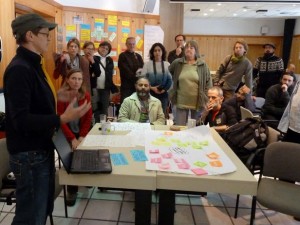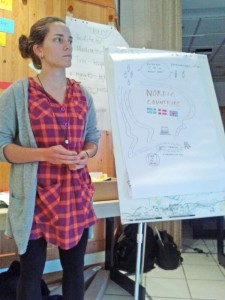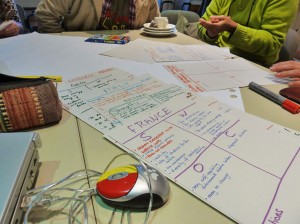The objectives of the Educational Structures group are:
- To share information about various national permaculture education systems and qualifications frameworks;
- To establish a pan-European network of permaculture teachers and organisations;
- To mutually support the national organisations to form networks to set up or improve their educational systems and structures;
- To support in developing organisational structures and working practices for less well set-up countries.
On this page you will find:
- Presentations of national educational structures;
- Different pathways towards the diploma in applied permaculture design;
- Links towards global directories of projects, courses and people;
- The results of a questionnaire with the number of courses organised in Europe in 2012;
- SWOC (Strengths, Weaknesses, Opportunities, Constraints) analysis of educational structures in Europe;
- [Coming Soon] A table with links towards European permaculture organisations, with information about diploma pathways, diploma holders, permaculture design courses, introduction courses and specialised courses;
- A document with interactions between elements of educational structures that you can use and play with to improve your organisation;
- [Coming Soon] The results of interviews made in May 2014 in Denmark that show the evolution of national permaculture organisations.
Existing Educational Structures in Europe
This is a collection of existing Educational Structures in different European countries. Do you want to add or change yours? Please get in touch with us!
- Netherlands - Educational Structures (embedded)
- Ireland - National Certification (embedded)
- Germany - Diploma Pathway (pdf)
- Italy - Diploma System (pdf)
- France - Diploma System (pdf)
- Portugal - Diploma System (embedded)
- Bulgaria - Educational Structures
- UK - Diploma System
- Finland - Educational Structures
- Sweden - Diploma System
- Spain - Educational Structures
- Nomad Permaculture (embedded)
- Europe - Permaculture Diploma Report (2008 - pdf)
Two global directories of projects, courses and people:
Questionnaire of Educational Structures During the meeting in Slovenia, we gathered questionnaires on educational structures from: Denmark, England, France, Germany, Ireland, Netherlands, Portugal, Italy, Austria, Croatia, Czech Republic, Slovakia and the Canary Islands. Overview of the Educational Structures Questionnaire (xls) SWOC Analysis
Also during the meeting we made a SWOC analysis (Strengths, Weaknesses, Opportunities, Constraints - and Solutions) of different educational structures: Strengths, Weaknesses, Opportunities, Constraints and Solutions (pdf) This information can be used for:
- each country and organisation to analyse and understand their own situation
- between the participating countries, to learn from each others strengths and opportunities
- countries creating a permaculture organisation, to learn and understand different strategies and ways to adapt to the local situation
- students to see the strength of each country and choose the association that is more adapted to their needs
Here are some conclusions and highlights of the SWOC: SWOC Analysis Conclusions (PDF) If you want to add or modify information about your organisation or country, don't hesitate to contact us.  Interactions Between Elements To analyse and improve your educational structures you can download this PDF with elements of an educational structure, print it and make connections / interactions / find functions between the various elements, and have fun! [gallery columns="4" link="file" ids="3288,3287,3286,3285"] "Educational Structures" refers to: ... capturing existing and emerging support structures in Permaculture education and teachers’ training in the different European countries, such as:
Interactions Between Elements To analyse and improve your educational structures you can download this PDF with elements of an educational structure, print it and make connections / interactions / find functions between the various elements, and have fun! [gallery columns="4" link="file" ids="3288,3287,3286,3285"] "Educational Structures" refers to: ... capturing existing and emerging support structures in Permaculture education and teachers’ training in the different European countries, such as:
- Introductory courses and workshops
- Basic permaculture courses
- Diploma pathways
- Advanced courses
- Integral & comprehensive courses
- Teachers’ register
- Tutor & senior tutor register
- Apprenticeships & internships
- Log in to post comments


